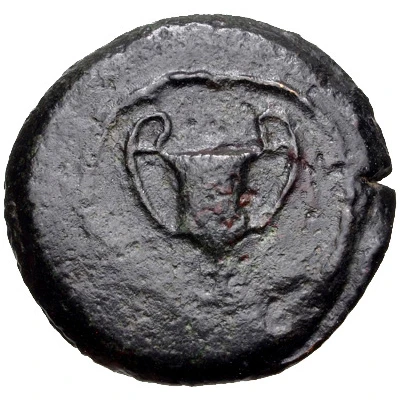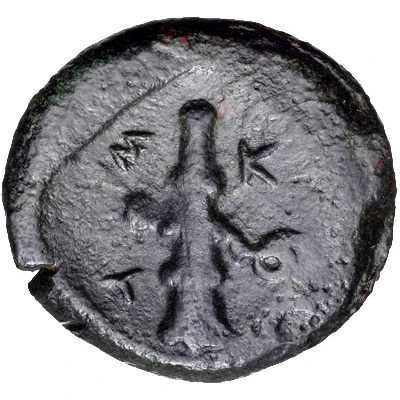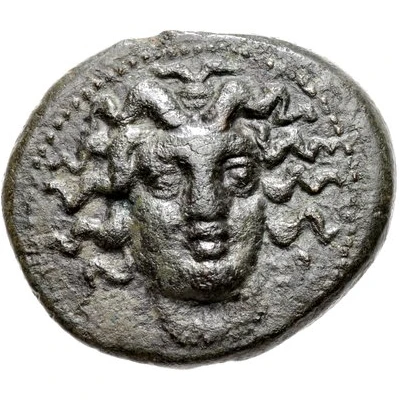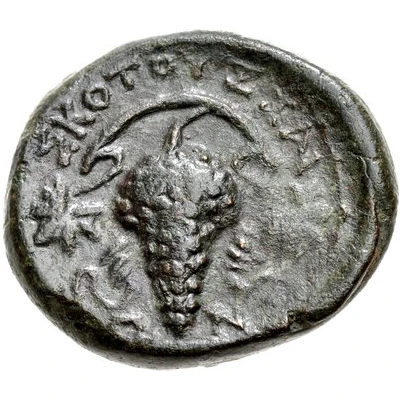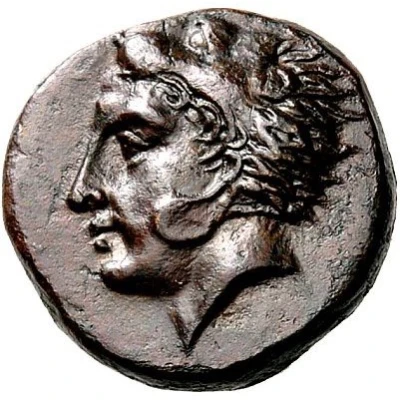
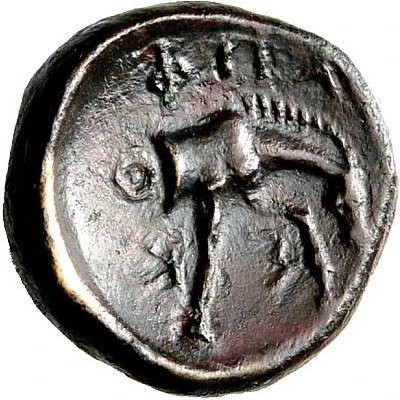

© Nomos AG
Dichalkon 394 BC - 367 BC
| Bronze | 2.72 g | 14.0 mm |
| Issuer | Skotoussa (Thessaly) |
|---|---|
| Type | Standard circulation coin |
| Years | 394 BC - 367 BC |
| Value | Dichalkon (1⁄24) |
| Currency | Drachm |
| Composition | Bronze |
| Weight | 2.72 g |
| Diameter | 14.0 mm |
| Shape | Round (irregular) |
| Technique | Hammered, Incuse |
| Demonetized | Yes |
| Updated | 2024-10-10 |
| Numista | N#170831 |
|---|---|
| Rarity index | 97% |
Reverse
Forepart of bridled horse to right, his head slightly lowered; all within shallow circular incuse
Script: Greek
Lettering:
Σ ΚΟ
ΦΠΑ
Interesting fact
The Dichalkon coin was used as a form of currency in the ancient Greek city-state of Skotoussa, located in Thessaly, during the 4th century BC. Despite its small weight of 2.72 grams, it was widely accepted as a medium of exchange and played a significant role in the local economy. Its design featured the image of a youthful male figure on one side and an inscription on the other, which helped to establish its authenticity and value. The use of bronze in the coin's minting process was also significant, as it was a durable and widely available material that was well-suited for the production of coins at the time. Overall, the Dichalkon coin represents an important aspect of ancient Greek economic and monetary history.
